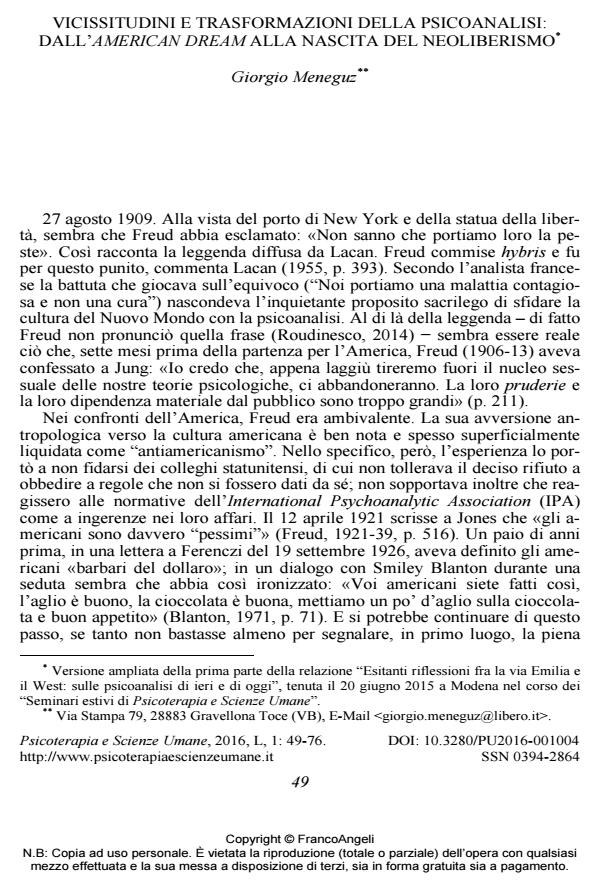Vicissitudini e trasformazioni della psicoanalisi: dall’American Dream alla nascita del neoliberismo
Titolo Rivista PSICOTERAPIA E SCIENZE UMANE
Autori/Curatori Giorgio Meneguz
Anno di pubblicazione 2016 Fascicolo 2016/1
Lingua Italiano Numero pagine 28 P. 49-76 Dimensione file 138 KB
DOI 10.3280/PU2016-001004
Il DOI è il codice a barre della proprietà intellettuale: per saperne di più
clicca qui
Qui sotto puoi vedere in anteprima la prima pagina di questo articolo.
Se questo articolo ti interessa, lo puoi acquistare (e scaricare in formato pdf) seguendo le facili indicazioni per acquistare il download credit. Acquista Download Credits per scaricare questo Articolo in formato PDF

FrancoAngeli è membro della Publishers International Linking Association, Inc (PILA)associazione indipendente e non profit per facilitare (attraverso i servizi tecnologici implementati da CrossRef.org) l’accesso degli studiosi ai contenuti digitali nelle pubblicazioni professionali e scientifiche
Viene proposto un breve resoconto di alcune vicissitudini della psicoanalisi negli Stati Uniti dopo l’espulsione dall’Europa continentale causata dall’avvento del nazismo, ed esaminata l’influenza che il quadro storico-sociale nordamericano ha esercitato sulle modificazioni della teoria e della pratica. Vengono discussi diversi fattori, tra cui l’insicurezza degli analisti immigrati, la professionalizzazione e la medicalizzazione della psicoanalisi, non esclusa l’ostilità nei confronti degli analisti politicizzati. Infine, dopo avere descritto sommariamente il quadro storico, si accenna alle ripercussioni esercitate sulla psicoanalisi dai cambiamenti - culturali, economici, politici, sociali - provocati dalla postmodernità neoliberista.
Parole chiave:Storia della psicoanalisi, American Dream, Psicologia dell’Io nordamericana, neofreudiani, neoliberismo
- Il caso Khan-Godley e l'ombra lunga degli antenati Giorgio Meneguz, in PSICOTERAPIA E SCIENZE UMANE 4/2025 pp.629
DOI: 10.3280/PU2025-004004
Giorgio Meneguz, Vicissitudini e trasformazioni della psicoanalisi: dall’American Dream alla nascita del neoliberismo in "PSICOTERAPIA E SCIENZE UMANE" 1/2016, pp 49-76, DOI: 10.3280/PU2016-001004